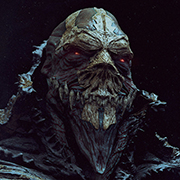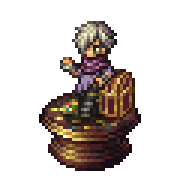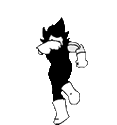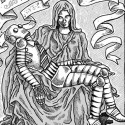- Shimrra Jamaane
- Aug 10, 2007
-

Obscure to all except those well-versed in Yuuzhan Vong lore.
|
quote:
Introduction
Hello! This is the second chapter in a six part series that will detail the western half of a broader, Grand Unified Theory of the Dawn. I believe it convincingly explains the legends surrounding the Dawn Age, the Age of Heroes, and the Long Night in Westeros. We will be touching on Garth, the Grey King, the Fisher Queens, the Drowned God, the Nightís King, the First King, Durran Godsgrief, and many others.
In the last one, we discussed the Green God, and the evidence to suggest he ruled over all of mankind in the Dawn Age. Today, we will discuss the ties he had to the Ironborn, the Grey King, and ancient Sea Peoples. We will also discuss The Breaking, a critical turning point in mankindís history on Planetos.
Several portions of this theory are inspired by Crowfoodís Daughter, whose content I highly recommend, and who pointed out almost everything Iíll be touching on here with regard to the Ironborn.
Sea Peoples
Last chapter I left you guys on a bit of a cliffhanger. Before we can get into mankindís seizure of fire, we need to lay some of the groundwork by talking about the settling of the Summer Sea:
These Deep Ones, as he names them, are the seed from which our legends of merlings have grown, he argues, whilst their terrible fathers are the truth behind the Drowned God of the ironborn. - The World of Ice and Fire - The Reach: Oldtown
There are a collection of legends and settlements across the Summer Sea that may warrant examination. ďDeep OnesĒ, I believe, are what remains of a Dawn Age people who Garth led across the Summer Sea in the days before he brought the First Men to Westeros.
This race was set apart from the First Men, and I believe accounts for Dawn Age settlements in Westeros that were created by seafarers (which the First Men were not).
Qarth:
It is the center of the world, the gate between north and south, the bridge between east and west, ancient beyond memory of man... - A Clash of Kings - Daenerys II
Basilisk Isles:
Ruins found upon the Isle of Tears, the Isle of Toads, and Ax Island hint at some ancient civilization, but little is now known of these vanished men of the Dawn Age. - The World of Ice and Fire - Beyond the Free Cities: The Basilisk Isles
On the Isle of Toads can be found an ancient idol, a greasy black stone crudely carved into the semblance of a gigantic toad of malignant aspect, some forty feet high. - The World of Ice and Fire - Beyond the Free Cities: The Basilisk Isles
The Qartheen pirate Xandarro Xhore was the first to raise his banner there, using the stones he found on Ax Isle to erect a grim black fort above his anchorage. - The World of Ice and Fire - Beyond the Free Cities: The Basilisk Isles
Yeen:
A ruin older than time, built of oily black stone, in massive blocks so heavy that it would require a dozen elephants to move them... - The World of Ice and Fire - Beyond the Free Cities: Sothoryos
Myr:
There are certain signs that a city stood where Myr now stands even during the Dawn Age and the Long Night, raised by some ancient, vanished people... - The World of Ice and Fire - The Free Cities: The Quarrelsome Daughters: Myr, Lys, and Tyrosh
Starfall:
Legend says the first Dayne was led to the site when he followed the track of a falling star and there found a stone of magical powers. - The World of Ice and Fire - Dorne: Kingdoms of the First Men
"My House goes back ten thousand years, unto the dawn of days," - A Feast for Crows - The Queenmaker
Oldtown:
We can state with certainty, however, that men have lived at the mouth of the Honeywine since the Dawn Age. The oldest runic records confirm this, as do certain fragmentary accounts that have come down to us from maesters who lived amongst the children of the forest. One such, Maester Jellicoe, suggests that the settlement at the top of Whispering Sound began as a trading post... - The World of Ice and Fire - The Reach: Oldtown
Iron Islands:
According to their faith, the ironborn are a race apart from the common run of mankind. - The World of Ice and Fire - The Iron Islands
Pyke is so ancient that no one can say with certainty when it was built, nor name the lord who built it. Like the Seastone Chair, its origins are lost in mystery. - The World of Ice and Fire - The Iron Islands: Pyke
Iíve plotted out this migration pattern below (Sea Peoples in Blue, Garth wandering on foot in Green, First Men invasion in Purple). An interesting thing to note, here, is that Oldtown would have been the first valid harbor that Sea Peoples would have reached in Westeros. The Arm of Dorne blocked access to the entire eastern coast, and Dorneís southern coast is said to be bereft of valid harbors:
Nor is the long southern coast of Dorne more hospitable, being for the most part a snarl of reefs and rocks, with few protected anchorages. Those ships that do put ashore there, whether by choice or chance, find little to sustain them; there are no forests along the coast to provide timber for repairs, a scarcity of game, few farms, and fewer villages where provisions might be obtained. - The World of Ice and Fire - Dorne
The one notable exception to this is the Greenblood, which seems to be the only fertile place in Dorne and the only place Garth could have made landfall in that barren land.
r/asoiaf - Art from the Lands of Ice and Fire, edited by Lauren
Art from the Lands of Ice and Fire, edited by Lauren
In the last chapter, I discussed that the first cities arose on the coast of the Jade Sea, and this is where I speculate the Sea Peopleís migration originated.
I believe that Green God came from the region surrounding the Jade Sea, and originally made his way to Westeros by sea, founding Oldtown and Pyke as trade outposts before journeying further inland by foot. While inland, he and the Grey King chopped down Ygg on the Isle of Faces, and sailed Nagga down the Blackwater into the Narrow Sea. Then the Greenhair came to the Sarne, where he taught the men there to farm while the Fisher Queens, his wives, sailed the Silver Sea. Finally, he led these people, the First Men, to colonize Westerosí interior in his name.
This ancient migration of the Sea Peoples from the Far East was what I believe to be the first iteration of the Great Empire of the Dawn, and would be the genesis of legends about mermaids (including the mermaids in my Triple Patchface theory), Sea Dragons (longships), and the green-haired Merling King come from.
Itís also possible that the Merling Kingís Driftwood Throne (which he gave to the Velaryons in ancient days) is the ancient weirwood throne of Garth, which sat atop Nagga in the Dawn Age. This ancient civilization, I believe, are the original progenitors of the Iron Islands that predate the arrival of the First Men, and left behind the Seastone Chair and Pyke.
Ironborn Ties
Until now Iíve been skirting around the Ironborn and the Grey King, and what relation they had to Garth Greenhair in the Dawn Age. What makes me think the two are related? Why do I think the weirwood longship was Garthís, when the Grey King was the one who carved it?
To answer this, we must first begin with the Ironborn more generally.
ďWe do not SowĒ are the house words of he who holds the title ďLord Reaper" of Pyke. Itís meant to refer to the Old Way of raiding the mainland, but ďWe do not SowĒ is an oddly specific way of saying it. Right off the bat, it seems like weíre looking at two neon middle fingers to the Green God and the men of the Green Lands. House Harlaw doubles down on the harvest imagery, taking the Scythe as their sigil.
Aside from the harvest, weíre hit with a lot of death associations. ďWhat is dead may never dieĒ is a colloquial phrase, and many ironborn houses have death symbols (like skeleton hands and nooses) as their heraldry. Weíre beginning to build a pretty strong association with the harvest, death, and winter (anathema to Garthís sowing, vitality, and summer symbols). This association between death, winter, and the harvest is common across many cultures in the real world, and itís no accident in A Song of Ice and Fire:
And when battle was joined upon the shores, mighty kings and famous warriors fell before the reavers like wheat before a scythe, in such numbers that the men of the green lands told each other that the ironborn were demons risen from some watery hellÖ - The World of Ice and Fire - The Iron Islands
Aside from the Ironborn more generally, the Grey King himself is a strong opposite to Garth the Green.
The Grey King ruled the sea itself and took a mermaid to wife, so his sons and daughters might live above the waves or beneath them as they chose. His hair and beard and eyes were as grey as a winter sea, and from these he took his name. - The World of Ice and Fire - The Iron Islands: Driftwood Crowns
The Grey King's greatest feat, however, was the slaying of Nagga, largest of the sea dragons, a beast so colossal that she was said to feed on leviathans and giant krakens and drown whole islands in her wroth. The Grey King built a mighty longhall about her bones, using her ribs as beams and rafters. From there he ruled the Iron Islands for a thousand years, until his very skin had turned as grey as his hair and beard. - The Iron Islands: Driftwood Crowns
Unlike the Green God, the Grey King grew old. Garth was known for sowing seeds, but the Grey King is only known for sowing death. Even teaching men to weave nets is a form of agriculture that involves only killing, while growing crops, in a sense, is creating life. Here again we see the winter imagery to contrast Garthís spring/summer.
In the last chapter we brought up the curse on the Great Barrow:
The old tales recorded in Kennet's Passages of the Dead claim that a curse was placed on the Great Barrow that would allow no living man to rival the First King. This curse made these pretenders to the title grow corpselike in their appearance as it sucked away their vitality and life. - The World of Ice and Fire - The North
It certainly evokes the image of the Grey King, who ruled for a thousand years as he slowly grew older and more corpse-like.
Hereís a man who was a living foil to Garth the Green and suffered the symptoms of the Great Barrow's curse. His followers would war with the men of the Green Lands for generations, and adopt phrases like ďWe do not SowĒ. While Garthís First Men were adopting sigils of flowers and trees, the ironborn were adopting nooses and scythes. The obvious conflict (both recorded historically and symbolically) between the followers of these two men suggests a conflict between them.
We are reminded of a couple key phrases oft-repeated in A Song of Ice and Fire:
"The kinslayer is accursed in the eyes of gods and men."
"No man is so accursed as the kinslayer."
Letís delve a little more into this duality and symbolic conflict between Garth and the Grey King:
In some stories the green god dies every autumn when the trees lose their leaves, only to be reborn with the coming of spring. This version of Garth is largely forgotten. - The World of Ice and Fire - The Reach: Garth Greenhand
As Garth the Green most closely resembles the pagan deity most commonly known as the Green Man (based on old Celtic mythology), this tale resembles the story of the Oak and Holly Kings.
Every year, the Oak (summer) King and the Holly (winter) King would do battle, slaying the other at the turn of the seasons. This pattern is not unique to the British pagan myths, as many fertility myths around the world have the fertility god leaving in winter and returning in summer (often due to the meddling of a rival winter deity). The Oak and Holly Kings, in particular, were usually depicted as brothers, fighting each other for the crown. The story of jealous fratricide, of course, is a tale dating back thousands of years, perhaps most famously in the tale of Cain and Abel.
You must be wondering why Iím harping on the brotherly aspect so much. When looking for a relationship between Garth and the Grey King (aside from rivalry), youíll find something interesting. While Garth is not recorded as having any brothers, the Grey King certainly is.
All the great houses of the ironborn claim descent from the Grey King and his sons save, curiously, the Goodbrothers of Old Wyk and Great Wyk, who supposedly derive from the Grey King's leal eldest brother. - The World of Ice and Fire - The Iron Islands: Driftwood Crowns
It is pretty curious that House Goodbrother, alone, descends from the brother of the Grey King instead of from one of the Grey Kingís sons. Letís examine House Goodbrother for clues.
Hereís their first introduction in A Clash of Kings:
Lord Goodbrother of Great Wyk had come in the night before with his main strength, near forty longships. His men were everywhere, conspicuous in their striped goat's hair sashes. It was said about the inn that Otter Gimpknee's whores were being hosed bowlegged by beardless boys in sashes. - A Clash of Kings - Theon II
In case it wasnít clear, we were just beat over the head with a fertility symbol bat. Theyíre so numerous that theyíre everywhere. Theyíre wearing goatís hair sashes (an accessory unique to this house). Theyíre loving the whores bow-legged. Theyíre ďbeardless boysĒ, or ďgreen boysĒ as they are often called in the books (ďgrey beards and green boysĒ means old men and young men). The head of House Goodbrother has a lot of kids too; FIFTEEN to be precise, including a set of triplets. The location of their seat is seemingly the only forested place in the Iron Islands.
It seems like the Goodbrothers are swimming in symbolic fertility, in stark contrast to the other ironborn houses. What else can we glean from reading Goodbrother passages?
The tent grew hot and smoky. Two of Gorold Goodbrother's sons knocked a table over fighting; Will Humble lost a wager and had to eat his boot; Little Lenwood Tawney fiddled whilst Romny Weaver sang "The Bloody Cup" and "Steel Rain" and other old reaving songs. - A Feast for Crows - The Iron Captain
The Goodbrothers arenít a very prominent house in the story, and the passages they do have are filled with two things: fertility and brothers fighting.
The Goodbrothers, as fertile and numerous as they are, have many cadet branches with seats called Crowspike Keep, Corpse Lake, and Shatterstone. Keep in mind these references to crows, corpses in the water, and shattered stones (theyíre references to an event).
Even aside from House Goodbrother, fratricide features prominently as a theme among the Ironborn. Victarion fantasizes about murdering his brother Euron, and Aeron is wracked with guilt over his brother Urri. The Damphair inadvertently killed Urri, who died from fingerdance-related complications in the days before Aeron was a priest.
I hope Iíve convinced you by now that the Grey King and Garth were likely brothers, and that they fought at some point in the past, with one killing the other. It is said that the Grey Kingís greatest achievement was slaying Nagga, a creature we know to have been Garthís weirwood longship; letís keep that in mind for now.
But we know the greatest foe of the Ironborn, and his name is not Garth. His name is the Storm God.
For a thousand thousand years sea and sky had been at war. From the sea had come the ironborn, and the fish that sustained them even in the depths of winter, but storms brought only woe and grief. - A Feast for Crows - The Prophet
Silently he cursed the Storm God for his maliceÖ - A Dance with Dragons - The Iron Suitor
Nagga's ribs became the beams and pillars of his longhall, just as her jaws became his throne. For a thousand years and seven he reigned here, Aeron recalled. Here he took his mermaid wife and planned his wars against the Storm God. - A Feast for Crows - The Drowned Man
Though most ironborn have naught but scorn for the Seven of the south and the old gods of the North, they do recognize a second deity. In their theology, the Drowned God is opposed by the Storm God, a malignant deity who dwells in the sky and hates men and all their works. He sends cruel winds, lashing rains, and the thunder and lightning that bespeak his endless wroth. - The World of Ice and Fire - The Iron Islands
The greatest enemy of the Ironborn is a malignant deity who hates mankind and all their works. This god sends storms to make the men of the islands miserable. This god is the enemy of the god who Drowned for mankind (whose colors are green, grey, and blue).
What else do we know of the Storm God?
Their ravens were creatures of the Storm God... - A Feast for Crows - The Prophet
The vision he spoke of was doubtless a snare set by the Storm God to lure the ironborn to destruction. - A Feast for Crows - The Drowned Man
Interesting. Ravens are creatures of the Storm God, and the Storm God likes to set snares. Is this starting to sound familiar?
Slight as they were, the children were quick and graceful. Male and female hunted together, with weirwood bows and flying snares. - A Game of Thrones - Bran VII
"The old gods of the north have sent this storm upon us." - A Dance with Dragons - The Kingís Prize
Were the Children of the Forest truly able to send storms? Letís look:
And then the seas came rushing in, and the Arm of Dorne was broken and shattered by the force of the water, until only a few bare rocky islands remained above the waves. The Summer Sea joined the narrow sea, and the bridge between Essos and Westeros vanished for all time. - The World of Ice and Fire - Dorne: The Breaking
In their wroth, they sent howling winds and lashing rains to knock down every castle Durran dared to build, until a young boy helped him erect one so strong and cunningly made that it could defy their gales. - The World of Ice and Fire - The Stormlands: House Durrandon
The point of land on which the Greyjoys had raised their fortress had once thrust like a sword into the bowels of the ocean, but the waves had hammered at it day and night until the land broke and shattered, thousands of years past. All that remained were three bare and barren islands and a dozen towering stacks of rock that rose from the water like the pillars of some sea god's temple, while the angry waves foamed and crashed among them. - A Clash of Kings - Theon I
It is my strong belief that the Hammer of the Waters was a powerful storm magic that the children could call upon in times of dire need. This image of the Storm being a Hammer is strong in the books (look no further than Storm Lord Robert's Hammer), but also has its basis in mythologies in the real world (Thor and Mjonir being the most famous).
I believe that the Storm God is a vague remembering of an ancient truth: the storms are sent by the great enemy across the waves. Ravens are his creatures, and he hates mankind.
Indeed, Ironborn have historically loved chopping down trees:
Archmaester Haereg has argued that it was a need for wood that first set the ironborn on this bloody path. In the dawn of days, there were extensive forests on Great Wyk, Harlaw, and Orkmont, but the shipwrights of the isles had such a voracious need for timber that one by one the woods vanished. So the ironborn had no choice but to turn to the vast forests of the green lands, the mainland of Westeros. - The World of Ice and Fire - The Iron Islands
In fact, often the trees themselves are framed as the enemies of the Ironborn:
These trees will kill us if they can. - A Dance with Dragons - The Wayward Bride
We are fighting shrubbery, Asha thought as she slew a man who had more leaves on him than most of the surrounding trees. - A Dance with Dragons - The Wayward Bride
The trees were huge and dark, somehow threatening. - A Dance with Dragons - The Wayward Bride
The trees hate us all, deep in their wooden hearts. - A Dance with Dragons - The Wayward Bride
Ygg was described as a demon tree, and it is said that the Children could turn the trees themselves into soldiers to fight for them. (Though I donít think that this is literally true.)
The point here is simple: the trees are your foeís ally. They hide among the brush and peer through their eyes. You are not welcome here, man of the Grey King.
That was why they cut down the trees whenever they warred upon the children. - A Clash of Kings - Bran IV
It seems that the greatest foe of the Ironborn was the Children of the Forest, and in a close second was Garth and his men of the green lands.
On the other hand, the greatest friend to the Ironborn and mankind is the Drowned God, enemy of the Storm God and champion of mankind.
Whatís interesting here is that Garth fought the Children of the Forest on behalf of mankind, and was known as a God on Earth. There are some very very good reasons to believe that Garth was this Drowned God the Ironborn worshipped.
But how could one of the greatest enemies of the Ironborn be their guardian deity?
The answer lies in the fact that Garth and the Grey King were brothers, and the events surrounding the Drowning.
The Drowning
Let's return to the moment I left you with in the last chapter. Thereís an unexplained discrepancy in the architecture Garth left behind. A sudden shift that suggests a turning point. When did Garth and mankind begin to practice fire magics?
It was the Grey King who brought fire to the earth by taunting the Storm God until he lashed down with a thunderbolt, setting a tree ablaze. - The World of Ice and Fire - The Iron Islands: Driftwood Crowns
Outside, beneath the snoring of his drowned men and the keening of the wind, he could hear the pounding of the waves, the hammer of his god calling him to battle. - A Feast for Crows - The Prophet
Letís read that again. The Grey King brought fire to the earth by goading the Storm God into striking a tree with a bolt of lightning, setting the tree ablaze.
Re-examined through the scope of some of what weíve discussed, the Grey King brought fire to the earth when he taunted the Children of the Forest into striking a tree with the Hammer of the Waters, setting it ablaze. But what is the tree?
Or rather, who is the tree?
Some of you may already see where Iím going with this; weíve already touched on the possibility that Garth was the Drowned God. But last we saw him, he was the Green God. His magic was Green magic, and heís never described as coming with ďfire and swordĒ. The Green God is associated with many things, but war was not one of them. His was not the pounding of the waves, calling his people to battle.
Thatís because he wasnít Drowned yet.
Legend says that the great floods that broke the land bridge that is now the Broken Arm and made the Neck a swamp were the work of the greenseers, who gathered at Moat Cailin to work dark magic. Some contest this, however: the First Men were already in Westeros when this occurred, and stemming the tide from the east would do little more than slow their progress. - The World of Ice and Fire - Ancient History: The Coming of First Men
ďEven if we accept that the old gods broke the Arm of Dorne with the Hammer of the Waters, as the legends claim, the greenseers sang their song too late...so many of their forebears had already made the crossing that they outnumbered the dwindling elder races almost three to one by the time the lands were severed, and that disparity only grew in the centuries that followed, for the women of the First Men brought forth sons and daughters with much greater frequency than the females of the elder races. - The World of Ice and Fire - Dorne: The Breaking
Aside from more clues that Garth was present among the First Men, these passages introduce doubt to the Childrensí motives in The Breaking. Why shatter the Arm when so many men were already in Westeros? Stemming the tide could do little more than stem their progress.
But we know of something that could cripple mankind in the Dawn Age.
A target that, if hit, would disrupt the very psyche of the human race. A man who, if killed, would take with him a crippling amount of humanityís magical power. Their very fields would bloom less vibrantly, and mankind would splinter into a thousand factions.
If the Children could kill their leader, the man who had killed the world tree, they could stop the First Men in their tracks. If the Children could break the Green Hand that guided mankind, they could set the world to rights again.
So they gathered upon the Isle of Faces, and a thousand throats were opened beneath the weirwood trees. They called upon their ancient gods of wood and leaf to Break Garth as he crossed the Arm of Dorne.
And instead, they set the Green God ablaze.
She cackled again. "Look in your fires, pink priest, and you will see. Not now, though, not here, you'll see nothing here. This place belongs to the old gods stillÖ they linger here as I do, shrunken and feeble but not yet dead. Nor do they love the flames. For the oak recalls the acorn, the acorn dreams the oak, the stump lives in them both. And they remember when the First Men came with fire in their fists." - A Storm of Swords - Arya VIII
A burning brand it is, such as our people carried of old. It is the flame the Drowned God brought from the sea, and it proclaims a rising tide. It is time to hoist our sails and go forth into the world with fire and sword, as he did. - A Clash of Kings - Theon I
Being a God, it was not for Garth to simply die. As the land collapsed around him, he knew who had summoned this hurricane to destroy him, and he swore a bloody vengeance.
And when he came from the sea, he had a fire in his heart; a terrible fury the likes of which the Children had never seen.
So began the scouring of the forest, and the slaughter of the Children.
Brandon of the Bloody Blade, who drove the giants from the Reach and warred against the children of the forest, slaying so many at Blue Lake that it has been known as Red Lake ever since. - The World of Ice and Fire - The Reach: Garth Greenhand
They drove the elder races before them, slaughtering giants wherever they found them, hewing down weirwood trees with their bronze axes, making bloody war against the children of the forest. - The World of Ice and Fire - Dorne: The Breaking
"The First Men killed half of them with bronze blades, and the Andals finished the job with iron." - A Storm of Swords - Samwell II
We are inundated with tales of the crusade against the children. The war was brutal, swift, and bloody; they painted the landscape with the blood of the children. These are no mundane conflicts over timber; this is a genocide led by an angry god.
"What is dead may never die," his uncle echoed, "but rises again, harder and stronger." - A Clash of Kings - Theon I
We are told that there was once a great forest stretching from the Crownlands to Cape Kraken; we can visibly see what remains of the bloody swathe that the Drowned Garth cut across Westeros:
r/asoiaf - Art from the Lands of Ice and Fire, edited by Lauren
Art from the Lands of Ice and Fire, edited by Lauren
It looks as though he sailed his weirwood longship up the Mander, slaughtering and axing and burning all in his path.
Trees grow no longer, and where there were once forests, now only fields and farms remain.
But it was not all violence. In this time, Garth would accomplish wonders as well. Built atop the bones of ten thousand woods dancers, of massive basalt blocks likely hauled into place by enslaved Giants, Moat Cailin stands as a testament to all he accomplished. His final achievement, the seizure of fire, was his most significant in the end, and the great blocks of volcanic stone are a monument to the greatness and madness that was Garth the Drowned.
r/asoiaf - Theon Greyjoy arrives at Moat Cailin - by Marc Simonetti
Theon Greyjoy arrives at Moat Cailin - by Marc Simonetti
As abruptly as the war began, it ended. The advance of the First Men was stopped in the North. It is said that the men of the green lands made peace with the children not long after The Breaking.
What happened?
The Betrayal
Garthís grave is in the North of Westeros. He fell on the field at the Great Barrow, not far from his ancient seat at Moat Cailin. If even the Hammer of the Waters could not slay the Green God, what could?
The Grey King's greatest feat, however, was the slaying of Nagga, largest of the sea dragons, a beast so colossal that she was said to feed on leviathans and giant krakens and drown whole islands in her wroth. - The World of Ice and Fire - The Iron Islands: Driftwood Crowns
It seems that the only force who could prove a match for Garth was his immortal brother, the Grey King. Who can say why he did it? Perhaps it was a feeling of inadequacy nurtured for millenia, living in his brotherís shadow. Perhaps, paralleling Euron and Victarion, Garth the Green had seduced and slept with the Grey Kingís wife. Perhaps it was greed, and he coveted his brotherís throne for himself. It was he who should rule mankind, not Garth.
Whatever the reason, the Grey King betrayed Garth in the North. The Grey King slew Garth at the site of the Great Barrow, and with his dying breath, Garth spoke into being a curse more formidable than any other.
The old tales recorded in Kennet's Passages of the Dead claim that a curse was placed on the Great Barrow that would allow no living man to rival the First King. This curse made these pretenders to the title grow corpselike in their appearance as it sucked away their vitality and life. - The World of Ice and Fire - The North
From there he ruled the Iron Islands for a thousand years, until his very skin had turned as grey as his hair and beard. Only then did he cast aside his driftwood crown and walk into the sea, descending to the Drowned God's watery halls to take his rightful place at his right hand. - The World of Ice and Fire - The Iron Islands: Driftwood Crowns
If Garth could not kill his brother, he would make life an unbearable agony for him, until it inevitably drove him to suicide. For the kinslayer is accursed in the eyes of gods and men.
Bonus Theory: Aside from the name, there are many things tying Greyscale to the Grey Kingís curse. Greyscale thrives in the iron islands (and wet places in general). It was summoned as a curse by Garin the Great to kill the Valyrian invaders (a disease called a curse). In the Sorrows (a sort of leper colony for ďstone menĒ, Greyscale victims), there exists a figure called the Shrouded Lord, who is also called ďhis Grey GraceĒ, who leads the stone men.
It is said that there have been multiple Shrouded Lords dating back centuries, and that the current one is a corsair from the basilisk isles. Perhaps the first ďGrey GraceĒ was also a pirate from a far away land. What happened to the Grey King sounds very similar to the symptoms and progression of Greyscale (possibly including blinding them), happening over a prolonged period of time (perhaps due to his immortal body). Eventually the agony of the slow Grey Death became too unbearable to live any longer, and the Grey King killed himself by walking into the sea.
In the wake of Garthís death, the throne of humanity was left open, and many claimants seized the opportunity. Garth left many children in Westeros: Garth the Gardener claimed the mantle of High King of the First Men. The Barrow Kings claimed the title of King of all First Men, everywhere. Humanity in Westeros was disorganized and vulnerable, and there was one more claimant who loomed over them all: The Grey King.
Garthís brother claimed his throne and his ship, Nagga, sailing it back to the Iron Islands and building his longhall there. The First Men knew of his treachery, but the other peoples of the Great Empire did not. When he returned to the Sea Peoples upon the Iron Islands (who revered Garth, and remember him as the Drowned God), he told them that the Storm God struck Garth down, and that he rules beneath the waves now.
So humanity was split into two camps, believing two stories. The men of the green lands knew the Grey King to be Garthís murderer, and despised him. The Sea Peoples heard only the Grey Kingís tale, and knew of the treachery of the demons and beast-men of Westeros.
The Grey King was not content to merely rule the Sea Peoples; he wanted to claim that same title Garth had: King of all Men.
The Pearl Emperor and The Pact
The Children of the Forest and the men of the green lands now had a common foe in the Grey King and the ancient ironborn. They could no longer afford to fight each other, for in those days the Ironborn presented a far greater threat than they do today. They may have possessed iron (or primitive valyrian steel?) weapons and armor, and ships that far outstripped those of the bronze-wielding First Men and glass-wielding Children:
The feeble fishing boats and trading cogs of the First Men, which seldom ventured out of sight of land, were no match for the swift longships of the ironmen with their great sails and banks of oars. And when battle was joined upon the shores, mighty kings and famous warriors fell before the reavers like wheat before a scythe, in such numbers that the men of the green lands told each other that the ironborn were demons risen from some watery hell, protected by fell sorceries and possessed of foul black weapons that drank the very souls of those they slew. - The World of Ice and Fire - The Iron Islands
Most infamous of all was Balon Blackskin, who fought with an axe in his left hand and a hammer in his right. No weapon made of man could harm him, it was said; swords glanced off and left no mark, and axes shattered against his skin. - The World of Ice and Fire - The Iron Islands
r/asoiaf - Victarion Greyjoy - by Matt Olson
Victarion Greyjoy - by Matt Olson
So the Children and First Men made a Pact. A peace born of necessity: the Children kept what forests remained, and mankind lived in the fields and hills and adopt the Old Gods (abandoning the worship of Garth). The Giants were left out of the agreement.
The alliance between the Children and the First Men proved strong. They resisted the Grey King as he came forth again and again, ravaging Westeros. In spite of the fact that the Grey King had a global empire to rule, he obsessed over the men of Westeros. He could not stomach his failure to measure up to his brother. Of the thousand and seven years he reigned, he would spend almost all of them on Old Wyk, planning his wars against the Storm God and the men of Westeros.
Let it not be said that he spent all of his time in Westeros, however, for there is substantial evidence he visited the Far East. The scribes of Yin know him as the Pearl Emperor, for his eyes were Pearl (all the gemstone emperors were named for their eyes, as I discussed in my eastern series). Each of the gemstone emperors ruled a smaller empire than the one before, and this trend began with the Grey King losing Westeros (with no king ever again being as powerful as Garth).
His obsession with reversing this loss of territory drove him insane, because I believe it was the catalyst for a mission that would be carried on long after his death:
We hear of cities where the men soar like eagles on leathern wings...of a race of bloodless men who dwell between the deep valley...of the Shrykes who live there, half-human creatures with greenscaled skin and venomous bites...even the Shrykes supposedly live in terror of K'dath in the Grey Waste, a city said to be older than time... - The World of Ice and Fire - The Bones and Beyond: Yi Ti
In my eastern series I outline the Great Empire of the Dawnís great fixation and pursuit of the Red Sword; the ultimate weapon of fire that could conquer any foe. I believe this pursuit began with the Grey King, who intended to use it to bring the Children and the First Men to heel.
I believe that he erected the Five Forts as sort of laboratories for blood magic abominations. There they created twisted human and animal chimeras in their attempts to realize their dream of reunification. The failed experiments were ďthe Grey Kingís wasteĒ, the byproducts of the pursuit of the Sword (hence, the regionís name is the Grey Waste).
The Grey King was only the first, and it would be continued at the Five Forts, in Sothoryos (where there were once lizard men and eyeless cave-dwellers, before the Brindled Men wiped them out), and elsewhere on the outskirts of the Empire. Over centuries the dream of reunification evolved into something greater and more sinister, as the desire to conquer was replaced by the pursuit of the Red Sword itself, but that will have to come in the next chapter.
The death of the Green God and the Pact were a turning point for humanity; a first fragmentation, and the end of an Age. It is said that the Grey King ruled in the Age of Heroes, and so it was, for his reign began at the signing of the Pact, at the end of the Dawn Age.
Thus began the Age of Heroes.
Thatíll wrap things up for this chapter. In the next chapter, weíre going to pick up after the death of the Grey King, and talk about Durran Godsgrief, the splintering of the First Men, and Dragon Dreams in the East. If youíd like to see when future chapters are likely to be posted, check out the Table of Contents. See you in the next one!
|







































